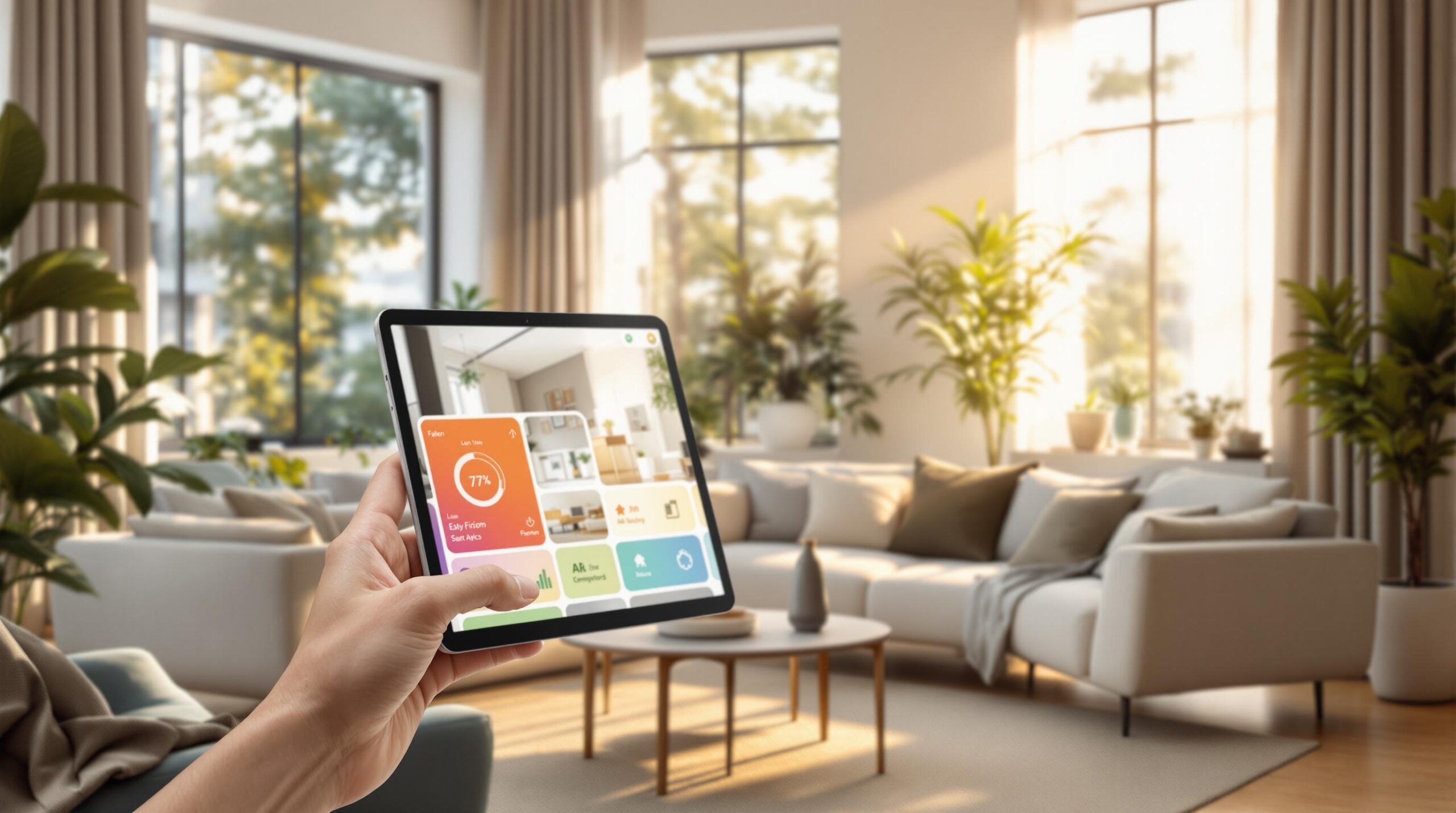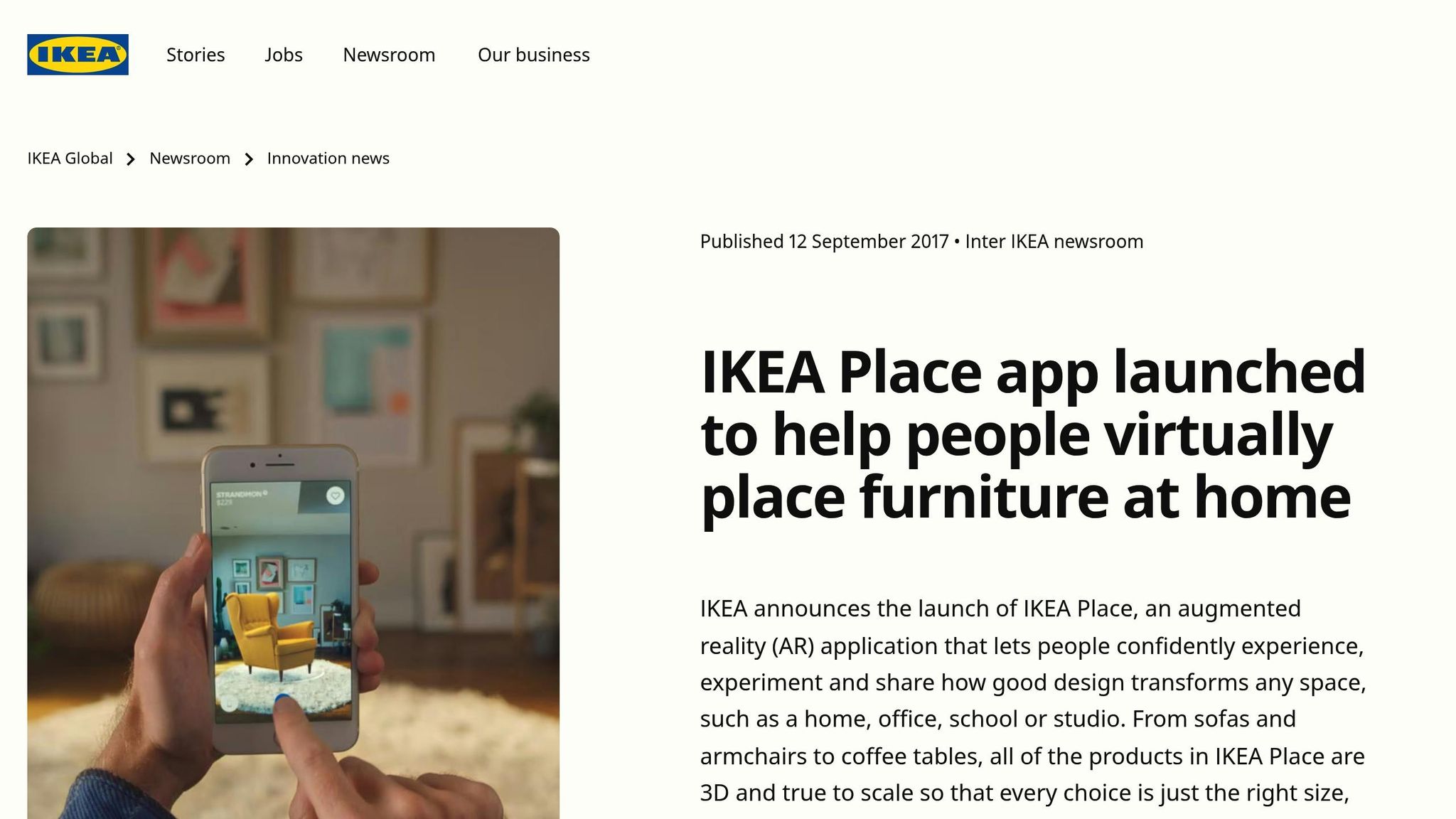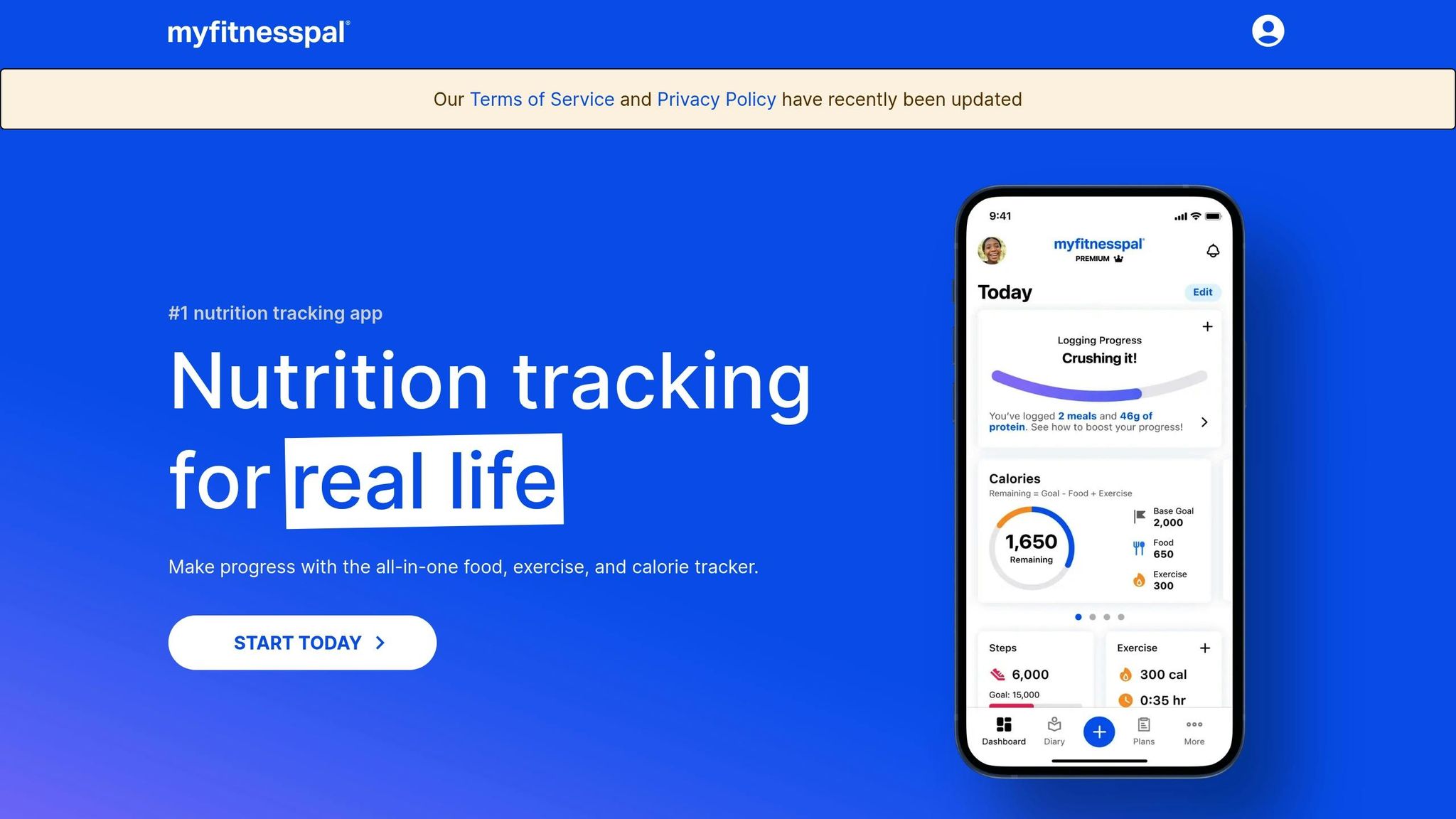
Custom apps simplify how you use smart devices by combining multiple controls into a single, easy-to-use interface. Here’s why they matter:
- Unified Control: Manage all your devices from one app instead of juggling several.
- Improved User Experience: 21% of users find smart devices hard to navigate – custom apps solve this with intuitive designs.
- Faster Performance: Direct communication with devices ensures quicker response times.
- Personalized Features: Tailored notifications, smart automation, and adjustable interfaces enhance usability.
- Data Security: Strong encryption and privacy controls protect your information.
Custom apps are essential for making smart devices easier, faster, and more secure to use. They also evolve with user needs, ensuring a better experience over time.
Control ALL Your Smart Devices in ONE App! #homeassistant
Main Advantages of Custom Smart Device Apps
Custom apps improve how smart devices work and make them easier to use by simplifying controls and solving common issues.
Direct Device Communication
Custom apps can connect directly with smart devices using their native programming language, resulting in faster and more dependable communication. This approach offers:
- Instant response times for controlling devices
By eliminating additional translation steps, these apps process commands quickly and reliably. This direct connection also supports automation and proactive maintenance, making devices more efficient and user-friendly.
Custom User Settings and Controls
Custom apps allow users to tailor interfaces and controls, creating a more engaging and satisfying experience. They offer features like:
- Adjustable Interfaces: Screens and controls adapt based on how users interact with them
- Personalized Alerts: Notifications are tailored to users’ preferences
- Smart Automation: Settings automatically adjust based on daily routines
These features are increasingly important, as 77% of businesses aim to use custom apps to enhance customer experiences. Along with personalization, speed and reliability are essential for delivering top-notch performance.
Speed and Reliability Improvements
Native apps deliver better performance thanks to optimized code and seamless integration with devices. This leads to clear advantages:
| Performance Factor | Native App Benefit |
|---|---|
| Code Efficiency | Streamlined, device-specific programming |
| Bug Fixing | Easier and more consistent debugging |
| System Integration | Direct access to device features |
| Response Time | Real-time command execution |
These benefits are critical for complex smart device systems, where even small delays can disrupt the user experience. By offering a more efficient structure, custom apps reduce issues and quickly adapt to users’ evolving needs, greatly improving satisfaction.
Essential Custom App Components
Key elements like easy-to-use design, advanced AI features, and strong security are critical for creating effective smart device apps.
Simple, Clear Interface Design
A user-friendly design is a must. In fact, 94% of users rank easy navigation as their top priority when using apps. To achieve this, modern apps often include:
- Clear Visual Hierarchy: Use size, color, and typography to guide users.
- Consistent Elements: Keep controls and patterns uniform across the app.
- Accessible Design: Support features like adjustable text sizes and high contrast.
- Responsive Feedback: Provide visual cues when actions are completed.
"Intuitive navigation is one of the most critical elements in mobile app design"
Additionally, 83% of users find an attractive design essential to their experience. While design sets the stage, incorporating smart features takes functionality to the next level.
Smart Features and AI Integration
The mobile AI market was valued at $2.14 billion in 2020, highlighting the growing demand for apps with intelligent features. These capabilities can significantly enhance user engagement and efficiency:
| Feature | Impact | Success Rate |
|---|---|---|
| Custom Content | Boosts engagement | 75% increase in user interaction |
| Voice Commands | Improves accessibility | Over 50% of users prefer voice commands |
| Predictive Analysis | Offers better suggestions | Over 30% increase in user retention |
| Chatbot Support | Reduces wait times | 40% faster response times |
For example, Spotify uses AI to create personalized playlists based on listening habits, while Uber leverages machine learning to optimize routes and predict traffic conditions.
Data Protection and Privacy
As apps become more advanced, safeguarding user data is crucial. Key security practices include:
- Strong Authentication: Implement two-factor verification.
- Data Encryption: Secure data during storage and transmission.
- Regular Updates: Keep security patches up to date.
- Network Security: Use WPA2 encryption to protect connections.
- Privacy Controls: Allow users to manage data-sharing settings.
"A strong password is an essential barrier that prevents unauthorized access to your devices and networks"
These measures are essential for building trust and ensuring user data remains secure. Together, design, AI features, and robust security create a reliable and engaging app experience.
sbb-itb-7af2948
Custom Apps in Action
Examples from everyday life highlight how custom apps are reshaping smart device experiences with advanced features and smooth integration. These apps showcase the benefits of direct device communication, tailored functionality, and improved performance.
Tesla App: Full Vehicle Management
Tesla’s app turns a smartphone into a powerful tool for managing nearly every aspect of your car. It offers a wide range of features designed to make driving more convenient:
| Feature Category | Capabilities | User Benefits |
|---|---|---|
| Vehicle Access | Phone key, remote lock/unlock | No need for physical keys |
| Climate Control | Remote preconditioning, defrost | Comfort before you drive |
| Power Management | Range monitoring, charge scheduling | Smarter energy use |
| Service | Diagnostic checks, scheduling | Easier maintenance |
"The Tesla app allows users to lock and unlock their vehicles with a phone key, manage climate controls remotely (including preconditioning and defrosting in cold weather), and check for software updates."
Other industries are also using custom apps to boost user interaction and satisfaction.
IKEA Place: Augmented Reality for Shopping
IKEA Place combines augmented reality (AR) and artificial intelligence (AI) to let users see how furniture will look in their homes. Key features include:
- Room Scanning: AI identifies walls, windows, and existing furniture for better placement.
- Virtual Previews: Users can place furniture in their space with accurate dimensions.
- Smart Suggestions: The app recommends items that match the room’s layout.
- Real-Time Adjustments: Change furniture size or color instantly.
MyFitnessPal: Personalized Health Tracking
MyFitnessPal uses AI to create a tailored experience for each user. Its features include:
- Real-time meal suggestions based on your activity.
- Automated workout plans.
- Dynamic calorie target updates.
- Customized content to match your fitness goals.
"AI enables the member to be at the center of the digital experience, with a custom output for each member that changes with them. Increased relevance and engagement deliver content that matches a member’s interests, needs, or goals, which helps them achieve their fitness goals more quickly."
– Bill Davis, CEO
Al Noshirvani, co-founder of Alta Technology Group, adds, "MyFitnessPal integrates AI to provide real-time dietary and workout suggestions based on the user’s current activity levels, goals, and food intake."
Building Better Custom Apps
Creating effective apps for smart devices requires careful research and thoughtful integration of advanced technologies.
Understanding User Requirements
Research is the backbone of successful app development. By conducting interviews, surveys, prototype tests, and analyzing requirements, developers can pinpoint user needs, avoid expensive revisions, and simplify the development process.
| Research Phase | Key Activities | Impact on Success |
|---|---|---|
| Initial Discovery | Stakeholder interviews, user surveys | Identifies core needs |
| User Testing | Prototype evaluation, feedback sessions | Reduces development changes |
| Requirement Analysis | Feature prioritization, technical review | Simplifies development |
"Giving people a voice in the earliest stages of the project will also help with app adoption at the end of the project." – Appivo
Maintaining open communication throughout the project ensures the final product aligns with user expectations. As Appivo puts it:
"Design like you know everything, but listen like you know nothing." – Appivo
This groundwork ensures the app functions smoothly across various devices.
Multi-Device Support
Once user needs are clear, ensuring the app works well on different devices becomes essential. A one-size-fits-all approach, like scaling down a desktop app for mobile, often falls short. Georg Petschnigg shared this insight:
"Three years ago, a phone product would have been a small version of Paper. We ran it. And we were like, ‘That’s cute.’ But it wasn’t the right thing." – Georg Petschnigg
To succeed, developers must consider screen sizes, resolutions, and interaction patterns, tailoring the experience for each platform.
New Technology Integration
Incorporating advanced technologies like AI and augmented reality can significantly enhance user engagement. Features such as voice commands and personalized recommendations can boost interaction by over 30%.
"AI in mobile app personalization is like having a personal stylist for your app experience. It’s all about making the user feel special and catered to, like when Netflix suggests new shows based on what you’ve watched before." – MoldStud
According to McKinsey‘s 2024 report, machine learning-driven personalization can increase revenue by 10–30% by offering more responsive, behavior-focused interactions. These tools make apps feel intuitive and user-friendly, enhancing the overall experience.
Conclusion: Smart Device Apps Moving Forward
Smart devices are evolving, and their future depends heavily on creating app solutions that meet specific user needs.
How Custom Apps Change Device Use
Custom apps are revolutionizing the way people interact with smart devices. By tailoring interfaces to individual preferences and enabling real-time responses, these apps make devices feel more intuitive and user-friendly. Additionally, data insights play a critical role in improving app features, ensuring they align with what users find most valuable.
This shift opens up new opportunities for device makers to create meaningful user experiences.
Next Steps for Device Makers
To stay competitive, device makers need a clear plan and effective implementation. Key areas of focus include:
| Development Focus | Impact on Success | Key Consideration |
|---|---|---|
| User Experience | Improves satisfaction | Prioritize intuitive design |
| Data Security | Protects user information | Stay compliant with regulations |
| Scalability | Ensures long-term usability | Build flexible systems |
Some proven strategies for success include:
- Fine-tuning performance based on user feedback
- Updating apps to support new technologies
- Incorporating AI and AR features
- Regularly addressing security vulnerabilities
Collaborating with developers skilled in both hardware and software is essential for creating apps that not only meet current demands but also stay relevant as technology advances. This approach ensures devices maintain high performance and continue to deliver a great user experience.



